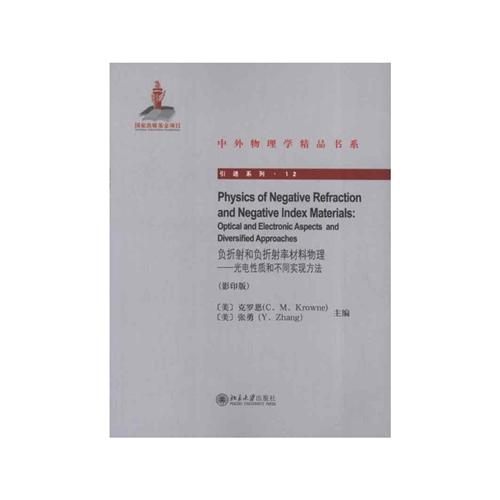负折射和负折射率材料物理:光电性质和不同实现方法(影印版) [2015-06-15] |
|
索书号 O4/Z698/v.12 1 Negative Refraction of Electromagnetic and Electronic Waves in Uniform Media |
首 页 >> 上架新书






